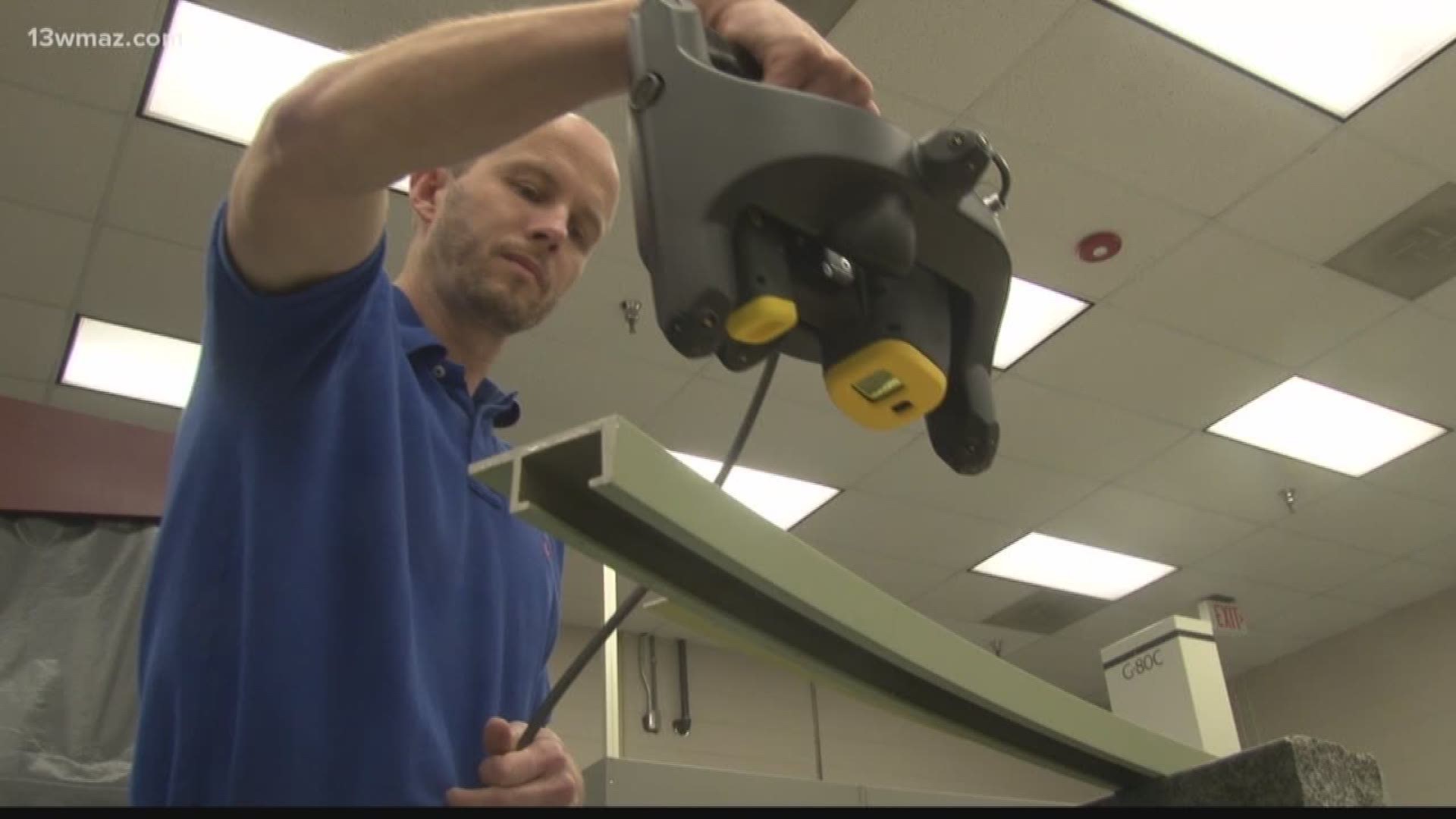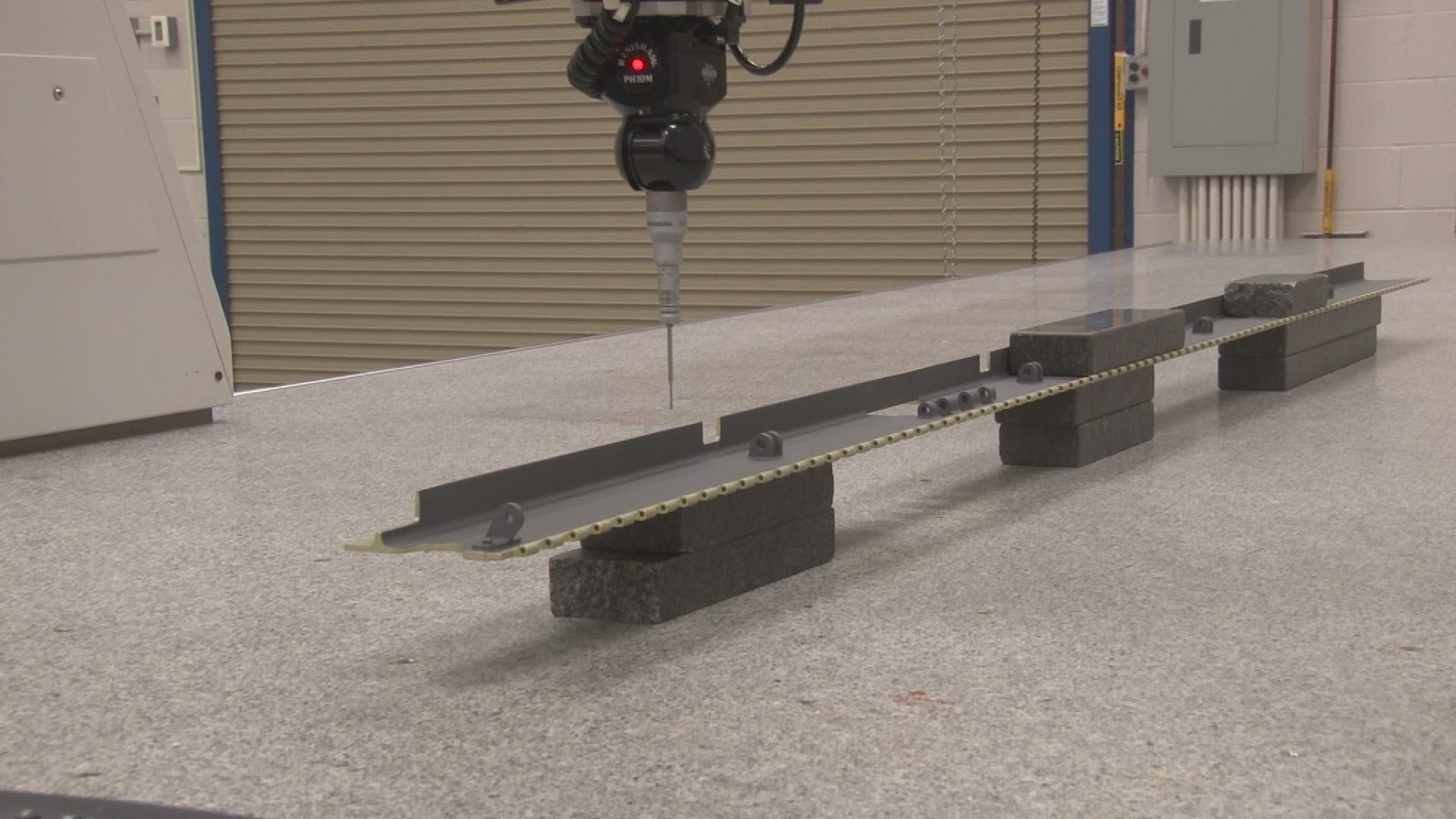The last thing an airman wants to hear a few thousand feet above the ground is something breaking.
That's why the 802nd Lab Production Flight tests materials long before they ever make it onto an airplane.
A lot of their work starts when a contractor brings in a prototype or pitches an idea for a new part.
The machinists and engineers can cut out the small parts needed for testing in other parts of the lab.
They can also build just about any part for testing before it is mass-produced.
"We've had to build parts for different applications around the base," says machinist Jeff Wolfe. "They might need a part in a certain section, so we build it from a drawing."
They're job also includes working with older parts that are no longer available to purchase. Using some reverse engineering, they've could rebuild those parts, even without a blueprint to guide them.
Once those parts are made, they need to be tested to make sure they meet the exact specifications required. That's where other areas of the lab come in.
"We are using a lot of metal alloys in the airplane, so we need to know their structure, their strength," says engineer Mufit Valcin.
Engineers use a variety of tests and microscopes to examine those variables.
One of their most impressive tools is a scanning electron microscope. It can measure exactly what materials and how much are on the surface of a part.
This can be crucial when determining if the paints or metals used are adequate for corrosion control.
A team of chemists across the hall use their own tests to also look for materials that might cause corrosion. Using just a small scrape off the surface of a part, they can determine exactly what it is made of.
All this work goes into making sure plane parts and tools are strong and reliable, even in difficult environments, but sometimes parts do break. It's up to the Failure Analysts to figure out why.
"I can look at the crack itself and determine if this is something that happened over time or was it because maybe we were a little rushed today and incidentally this failure happened," says analyst Daniel Doak.
Flight Chief Randy Broach says having these capabilities at Robins increases speed and efficiency, two top priorities on the base.
He also says it is less expensive because they don't have to pay contractors or shipping costs.
He says some of these tools are the only ones of their kind in the Air Force, so they have done a lot of work for bases across the country and they are even able to serve non-government customers.


